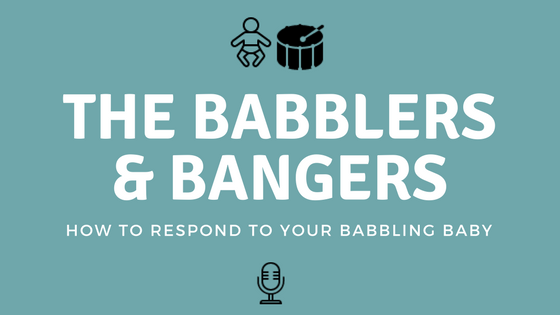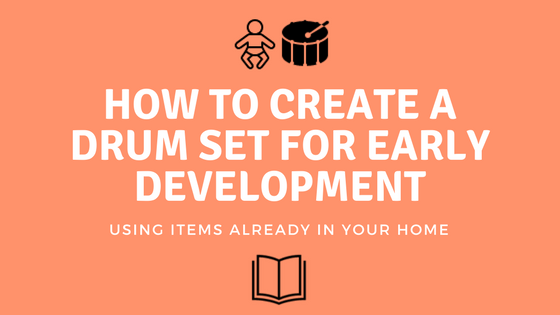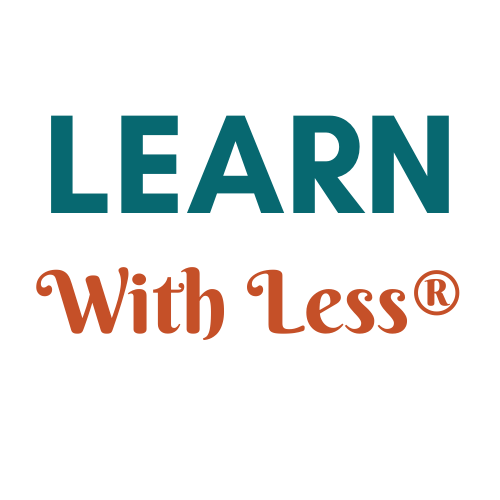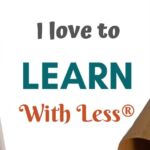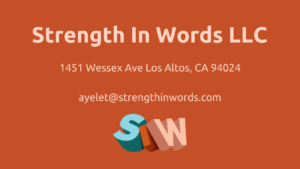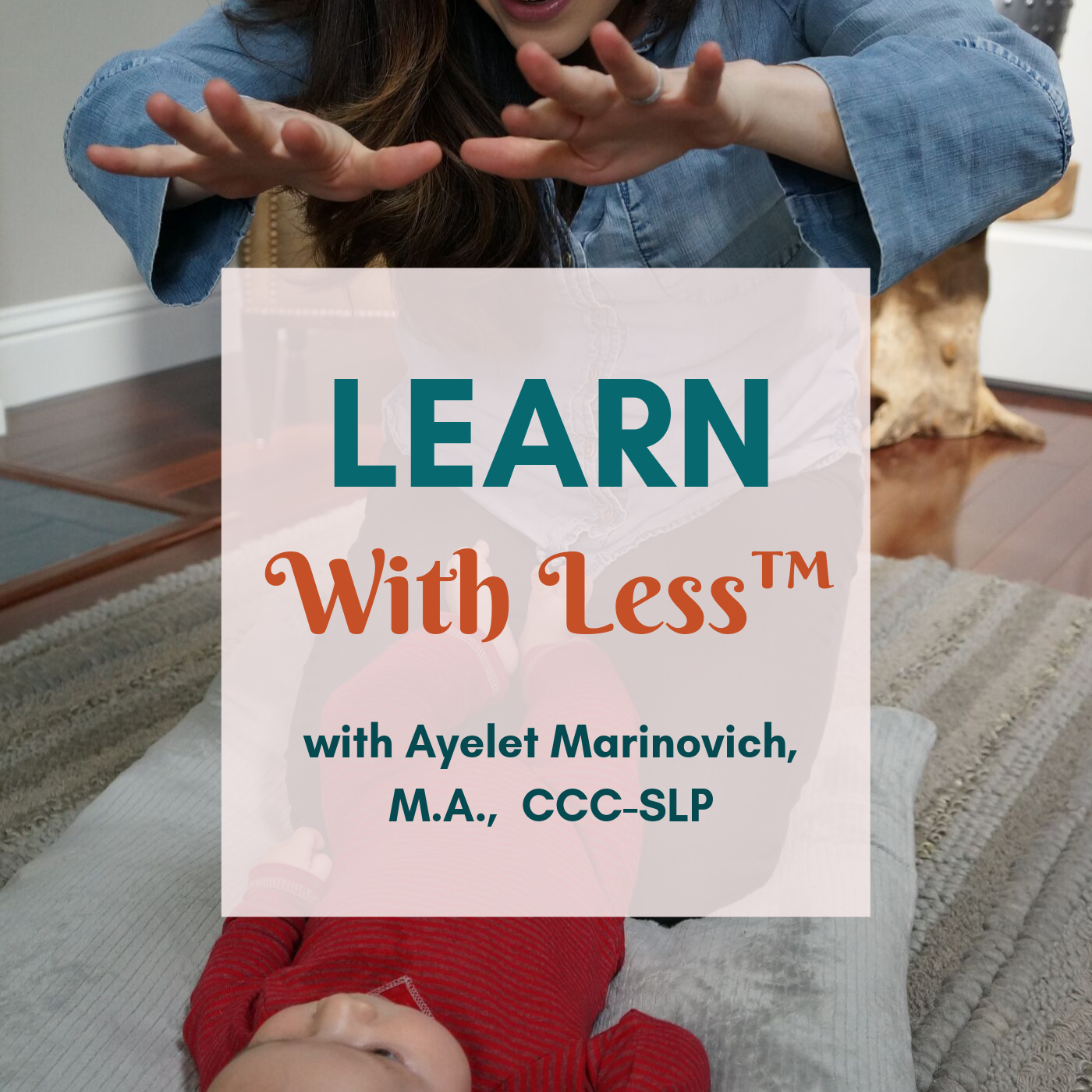

Ayelet Marinovich, M.A., CCC-SLP
How To Respond To Your Babbling Baby
There is a link between your infant’s babbling and the development of early gesture.

This episode of Learn With Less focuses on this topic – and Ayelet gives you ideas to use musical experiences with your babbling baby to develop the sense of “vocal play” that results in experimentation, play and – ultimately – language!
Below is the transcript of this episode’s “Developmental Thought,” an excerpt from the full episode.
For additional information, music, play ideas and the complete interactive family experience, please listen to the entire episode.
On the last episode of Learn With Less, (Communication, The First 6 Months), we talked about the typical development of infant communication within the first 6 months of life, and we ended our conversation with the topic of babbling, or the sounds your baby makes with his mouth that combine both a consonant and vowel – like “bababababa.”
>>Don’t Miss Our Corresponding Blog Post!<<
What the Research Suggests
There’s some interesting research to suggest that rhythmic arm movements (like banging) increase substantially around the same time as the onset of babbling, and that there is a definitive relationship between infant gesture and the acquisition of spoken language.
We already know that gesture is one very clear form of non-verbal communication. Today we sang a song that made use of gestures, both representational (like waving, which represents a greeting) and referential (like pointing, which helps us refer to something being pointed at), as well as traditional or personal “signs” – hand movements or motions which can represent a specific word, thought or idea.
Gestures and Sign Language
You are welcome to use whatever hand signal or representational sign that works within your family. When you watch my video, you can see the gestures I use, which are adaptations of signs from American Sign Language.
You may have questions about using signs with a child who is not deaf or hard-of-hearing – I’ll focus more in depth on that topic in a future episode, but for now, I’ll mention that there has been a lot of research on this, and the consensus is that a young child will use the most efficient, effective, and easiest form of communication presented to them.
If your child is accustomed to hearing English (or any other verbal language) as his primary language, then when he can speak, he will! Signing can be considered a form of gesture (a very specific representational gesture), and, again, gestures often develop before speech.
Remember that most children are starting to babble around the same time as they start to experiment with movements of their arms (such as banging a drum) – this is a good way of thinking about how precise their movements are – and how much more precise these movements will need to be to sequence all the sounds in a word.
But all of this is a progression of ability – first we see larger, less refined movements, like banging, or sweeping with the hand to move an item from one place to another, or babbling with a simple consonant-vowel combination… and then those eventually turn into more precise movements and sequencing of movements – gestures like pointing or signing, pincer grasping with the thumb and forefinger, and actual words which require a particular set of sounds in a particular sequence.
Rhythm Play
[The second rhythmic activity we did in this episode] is great fun if you have a toddler or preschooler who can repeat rhythms back to you… but what about a little babbler? That activity is going to be fun for him to listen to on this podcast, and interesting for him to watch you do, but way too complicated for him to actually perform in imitation.
So how can we make it more about him? We can switch the activity around – and imitate the rhythms he makes! When we do this, we make rhythms together, we take turns, and we validate and repeat what our little ones create. So if he makes three short bursts, you make three short bursts – and then pause. Wait for him to go again. When he does, imitate his rhythms again!
He may notice what you’re doing, and get a real kick out of it! Do this with vocalizations, as well – this encourages your baby to engage in that vocal play, because he sees that you can be playful, too! There is a stage within that first year of life when typically developing babies realize that their caregivers are imitating them – and most of the time, they find this pretty hilarious, or at least fascinating!
Vocal Play vs. Baby Talk
You may have heard that using “baby talk” with your baby is not a good idea. If all you’re saying to your infant all day long is “goo goo gah gah,” then yes, please build actual words into your repertoire. Or if what you’re doing with your verbal toddler is repeating back his infantilized versions of words (“wawa” for water or “bup” for “cup”), regardless of how cute it might be, try to stop that, too!
Again, children learn through imitation, so when we use actual and correct forms of words, and correct sentence structure, that is what we’re going to be teaching them. This vocal play imitation is different from “baby talk” in several ways – first, I’m assuming that this is not the only time you talk with your child. By all means, talk to your child using actual language!
Narrate your day until you feel like a walking audiobook. Talk about what you’re doing, what your child is doing, what you see, where you’re going, etc., no matter whether your child is 3 days or 3 years old. But also, stop to engage in vocal play like the kind we were talking about just now.
This kind of interaction falls under the category of social play, and when you do it again and again, your baby is able to categorize it as a “social routine” or a game that he plays with you – another example being a game like peek-a-boo.
Even pre-verbal children can request things like social routines by actually initiating them, or by getting into the same position or bringing you the same props you used the last time you played that way. It takes us paying attention to those associations our children are making to sometimes read their cues.
Resources We Mentioned:
Why Sign? – Learn With Less Podcast episode featuring Learn With Adrienne
5 Strategies to Promote Communication In Your Young Child – Learn With Less Podcast episode featuring Carrie Clark of Speech & Language Kids
References:
Iverson, J. M., Hall, A. J., Nickel, L., & Wozniak, R. H. (2007). The Relationship between Reduplicated Babble Onset and Laterality Biases in Infant Rhythmic Arm Movements. Brain and Language, 101(3), 198–207. http://doi.org/10.1016/j.bandl.2006.11.004
